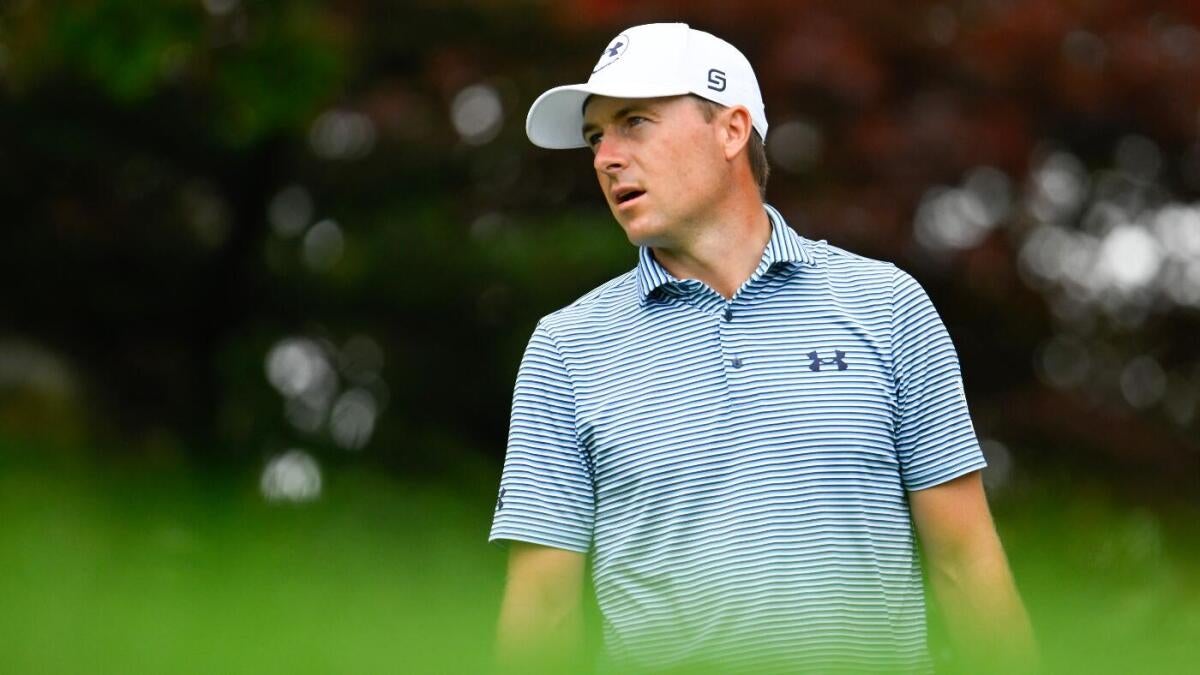The Fragility of Champions: Jordan Spieth’s Withdrawal and the Rising Trend of Injury in Golf
An Unprecedented Decision
Jordan Spieth, a name synonymous with grit and determination on the golf course, made an unprecedented decision at the 2024 Travelers Championship. His withdrawal mid-tournament, due to a neck injury sustained during warm-up, marked a significant departure from his usual tenacity. Spieth, known for pushing through discomfort, found himself unable to continue after 12 holes, carding a 5-over score. This was not a strategic retreat but a forced one, dictated by physical limitations. The timing of this withdrawal, at the final Signature Event of the season, added another layer of significance, impacting his competitive schedule and potential earnings.
A Growing Concern: The Injury Trend
Spieth’s situation is part of a concerning pattern. Injuries are disrupting the careers of prominent golfers at an alarming rate. Nelly Korda, a dominant force in the LPGA, has battled neck spasms, leading to withdrawals. Sahith Theegala, a rising star, was sidelined with a neck injury, opening a spot in the field for another player. Even established veterans like Justin Rose have succumbed to physical setbacks, withdrawing from the Arnold Palmer Invitational with a back injury. Jason Day’s unexplained withdrawal from the Truist Championship further underscores the prevalence of undisclosed health issues.
This surge in reported injuries raises critical questions about the evolving physical demands of the modern game. Increased swing speeds, intensified training regimens, and the relentless travel schedule all contribute to the strain on players’ bodies. The pressure to maintain peak performance week after week, coupled with the inherent repetitive motions of the golf swing, creates a breeding ground for overuse injuries.
The Ripple Effect on Competition
The consequences of these injuries extend beyond individual players. Withdrawals disrupt tournament fields, altering the competitive landscape and potentially impacting betting odds and fan expectations. The absence of key players diminishes the overall quality of competition, robbing fans of the opportunity to witness thrilling head-to-head battles. Spieth’s withdrawal, for instance, not only affected his own performance but also removed a significant contender from the field, highlighting the unpredictable nature of the game.
The Mental Battle
While the focus is often on the physical aspects of injury, the mental toll should not be underestimated. For a player like Spieth, accustomed to playing through discomfort, being forced to withdraw represents a significant psychological setback. The pressure to perform, the fear of falling behind in the FedExCup standings, and the constant scrutiny of the media all contribute to the mental strain on professional golfers. An injury not only disrupts their physical routine but also triggers anxiety and self-doubt, potentially impacting their performance even after they return to the course.
Proactive Measures for the Future
The recent spate of injuries serves as a wake-up call for the PGA Tour and its players. A more proactive approach to injury prevention is crucial. This includes prioritizing physical conditioning, incorporating more rest and recovery into training schedules, and providing access to comprehensive medical support. Furthermore, a greater emphasis on biomechanics and swing analysis could help identify and address potential risk factors before they lead to injury. The tour could also explore ways to reduce the intensity of the schedule, perhaps by limiting the number of events or extending the off-season.
A Defining Moment and a Shifting Landscape
Jordan Spieth’s withdrawal from the Travelers Championship was more than just a personal setback; it was a symptom of a larger issue plaguing professional golf. It highlighted the increasing vulnerability of players to injury, the disruptive impact on competition, and the need for a more proactive approach to player health and well-being. As the sport continues to evolve, prioritizing the physical and mental resilience of its athletes will be paramount to ensuring its long-term sustainability and captivating audiences for years to come.
The incident serves as a stark reminder that even the most enduring champions are not immune to the physical demands of the game. A shift in mindset—one that prioritizes longevity and well-being alongside performance—is urgently needed. By addressing these challenges head-on, the world of professional golf can continue to thrive, inspiring future generations of athletes and fans alike. The journey ahead is clear: embrace the fragility, strengthen the resilience, and ensure that the game we love remains as enduring as its champions.











